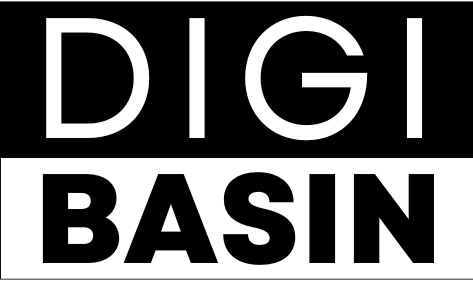When it comes to stock trading, disciplined exits are as important as smart entries. In fact, many traders lose money not because they picked the wrong stocks, but because they failed to manage risk. Stop loss and take profit orders are the two simplest, most powerful tools for that job.
In this guide you’ll learn what these orders do, why you need them, and how to set them clearly on popular platforms used by UK, US, and global investors.
Why Stop Loss and Take Profit Matter
A stop loss automatically closes a losing position once price hits a level you specify. Conversely, a take profit closes a winning position at a target price so you lock in gains. Together they remove emotion from exits.
Without them, beginners often hold losers too long and take profits too early.
Moreover, regulators and studies warn that many retail traders lose money, especially when using leveraged products like CFDs, so risk controls are vital. The UK Financial Conduct Authority has made CFD risks a supervisory focus, and industry surveys suggest a large share of retail CFD accounts lose money.
Also Read:
- Differences Between CFD and Real Stock Trading Explained Simply
- Top 10 Mistakes New Stock Traders Make in the First 30 Days
- Long-Term vs Short-Term Stock Trading: Which One Is Safer for Beginners?
General Principles Before You Place Orders
- Decide your risk per trade (e.g., 1% of your account).
- Calculate stop distance using volatility (ATR or recent swing highs/lows).
- Set take profit with a sensible risk:reward (2:1 or better is common).
- Use stop-limit if you want price control, but note it may not execute in fast moves.
- Test on demo accounts first.
These five steps keep you sane and solvent. They also translate directly into the order fields you’ll see in platform tickets.
How to Set Stops and Targets on Major Platforms
Below are straightforward, platform-specific steps. I highlight the common buttons and pitfalls so you don’t fumble in live markets.
eToro (web & app)
On eToro you can set both stop loss and take profit when you open a trade, or edit an existing position from your portfolio. Click the trade → choose STOP LOSS or TAKE PROFIT → enter the price or percentage → confirm. eToro also supports trailing stops on some instruments. For step-by-step help, see eToro’s support pages.
Practical tip: eToro’s stop loss is commonly entered as a money amount or percent. Use percent if you prefer risk relative to position size.
IG (web, mobile, and L2 Dealer)
IG provides several stop types: stop, stop-limit, and guaranteed stop (for CFDs and some spread bets). When placing a deal, open the order ticket and choose the stop type under the “Stop” field. IG explains stop mechanics and how the trigger works on its risk-management pages.
Important: Guaranteed stops cost extra but protect against gapping beyond your stop level. Consider them for volatile events or overnight risk.
Interactive Brokers (TWS & mobile)
Interactive Brokers offers a wide array of exit orders, including Stop, Stop-Limit, Trailing Stop, and Profit-Taker OCO (one-cancels-other) combos. In Mosaic or TWS, create a parent order and attach child stop/take-profit legs, or use the “Bracket” order to automatically place both stop and profit targets on entry. Interactive Brokers’ trading lessons walk you through these choices.
Pro tip: IB’s bracket orders are excellent for disciplined traders because the platform cancels the opposite leg once one executes.
Robinhood (US app)
Robinhood supports stop orders and stop-limit orders for equities and some options. On mobile, open the trade screen, select Order Type → choose Stop or Stop Limit, then set the trigger price and limit (if using stop-limit). Note that Robinhood doesn’t have advanced OCO bracket functionality like pro platforms. See Robinhood support for specifics.
Heads-up: Because Robinhood’s overnight access and execution rules differ from full-service brokers, verify how your order behaves outside normal hours.
MetaTrader 4 / 5 (MT4 / MT5)
MetaTrader is widely used for CFDs, forex, and some stock brokers. To set SL/TP on MT4, place a market or pending order and enter Stop Loss and Take Profit fields in the ticket. You can also drag the SL and TP lines on the chart to adjust them visually. Many MT4 tutorials and broker guides cover the mechanics.
Remember: some MT4 brokers will convert stop orders into market orders at trigger, which may lead to slippage in fast markets.
TradingView (broker-connected charts and alerts)
TradingView itself provides chart-level stop and target lines and, when integrated with a broker, can send actual order modifications. You can draw the stop-loss and take-profit lines and adjust them by dragging, or place orders via the trading panel and include SL/TP values. TradingView’s support explains the available workflows.
Note: TradingView’s functionality depends on your connected broker; not all broker integrations support full order modification via TradingView.
Order Types: Quick Cheat-sheet
- Market Stop (stop market): Converts to market order at trigger (fast fill, possible slippage).
- Stop-Limit: Converts to limit order at trigger (no slippage guarantee; may not fill).
- Trailing Stop: Moves stop level in your favour as price moves; locks in gains.
- Guaranteed Stop: Broker guarantees fill at your price for a fee; useful around news.
- Bracket / OCO: Places take profit and stop as linked legs; when one executes, the other cancels.
Use market stops for likely fills, stop-limits if you must control execution price, and guaranteed stops when downside risk from gapping is unacceptable.
Common Stop Loss Mistakes and How to Avoid Them
- Setting stops too tight: You’ll get stopped out on normal noise. Instead, use ATR or recent swing points to give your trade breathing room.
- Failing to account for spreads: Place stops beyond the spread; otherwise your stop could be triggered immediately.
- Ignoring order execution rules: Some brokers won’t execute certain stops outside market hours. Always check your broker’s documentation.
- Relying on stop-limit in fast markets: They can leave you unfilled and exposed to bigger moves. Use with caution.
Investing time in understanding each platform’s nuances prevents rookie mistakes that cost real cash.
Checklist Before You Hit Submit
- Confirm stop and take levels reflect real volatility.
- Check the order type (stop vs stop-limit vs guaranteed).
- Ensure risk per trade matches your plan.
- Verify how your platform handles overnight and pre/post-market triggers.
- Practice on a demo until you can set orders confidently.
Also Read:
- 7 Best Dividend-Paying Stocks for Passive Income
- How to Make a Full-time Income with Trading 212 as a Stock Trader
- How to Start Trading Stocks with as Little as $100
Final Thoughts
Using stop loss and take profit orders is not optional, it’s risk management 101. Across platforms like eToro, IG, Interactive Brokers, Robinhood, MT4/MT5 and TradingView the mechanics differ, but the logic is the same: define risk, limit losses, and lock gains.
Regulators have highlighted retail losses in leveraged products; therefore, exits matter. Learn the exact buttons on your chosen platform, test them in demo mode, and make exit planning a non-negotiable part of every trade.


















